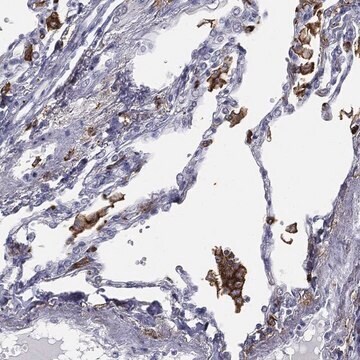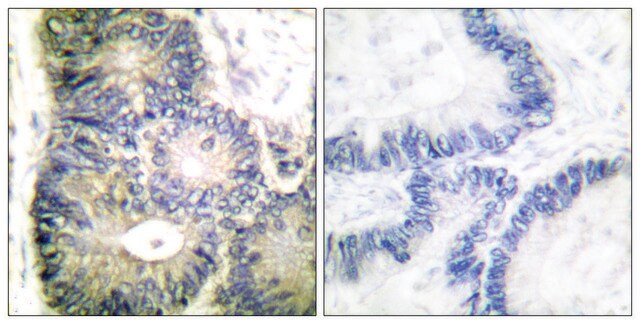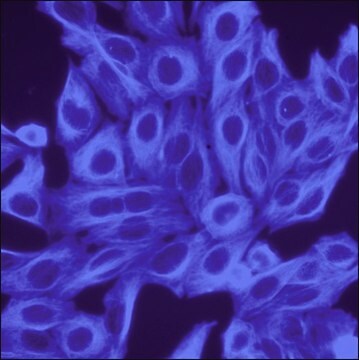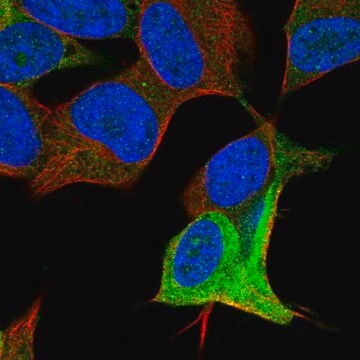SAB4200631
Monoclonal Anti-CYBA antibody produced in mouse
clone CB-64, purified from hybridoma cell culture
동의어(들):
Cytochrome b558 subunit alpha, Neutrophil cytochrome b 22 kDa polypeptide, Superoxide-generating NADPH oxidase light chain subunit, cytochrome b-245 alpha polypeptide, p22-PHOX
About This Item
추천 제품
생물학적 소스
mouse
Quality Level
항체 형태
purified immunoglobulin
항체 생산 유형
primary antibodies
클론
CB-64, monoclonal
양식
buffered aqueous solution
종 반응성
bovine, mouse, rat, monkey, human, canine
농도
~1 mg/mL
기술
flow cytometry: 5-10 μg/test using HeLa cells.
immunoblotting: 0.5-1 μg/mL using whole extracts of HeLa cells.
immunofluorescence: 5-10 μg/mL using HeLa cells.
동형
IgM
UniProt 수납 번호
배송 상태
dry ice
저장 온도
−20°C
타겟 번역 후 변형
unmodified
유전자 정보
human ... CYBA(1535)
mouse ... Cyba(13057)
rat ... Cyba(79129)
일반 설명
면역원
애플리케이션
- immunoblotting
- flow cytometry
- immunofluorescence
생화학적/생리학적 작용
물리적 형태
면책조항
적합한 제품을 찾을 수 없으신가요?
당사의 제품 선택기 도구.을(를) 시도해 보세요.
Storage Class Code
10 - Combustible liquids
WGK
WGK 1
Flash Point (°F)
Not applicable
Flash Point (°C)
Not applicable
가장 최신 버전 중 하나를 선택하세요:
자사의 과학자팀은 생명 과학, 재료 과학, 화학 합성, 크로마토그래피, 분석 및 기타 많은 영역을 포함한 모든 과학 분야에 경험이 있습니다..
고객지원팀으로 연락바랍니다.








